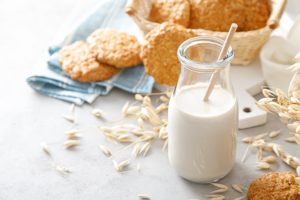Food of the Gods
Theobroma Cacao, the scientific term for chocolate, means “food of the Gods”. Although chocolate has a history of over 5000 years beginning in Mesoamerica, it wasn’t until the 19th century that this delicacy reached the masses across the world. It was in 1847 that the first bar of edible chocolate as we know it today was produced and there has been no looking back since.
With over $100 billion worth of retail sales happening globally chocolate today is the one-stop food destination for all moods, occasions and seasons. Western Europe, North America and Asia are the top 3 regions that account for over 70% of sales worldwide. The United States, Germany, Switzerland and Belgium are the top four countries responsible for the production of chocolate and account for nearly 65% of the total world chocolate production.
Over the years consumers have evolved in their flavour preferences across food and beverage categories, and it is no different with chocolate. The indulgent treat has grown from humble bars to exquisite handcrafted delicacy. In the past few years there has been a significant growth in the demand for speciality chocolate products and premium offerings due to the rising emphasis on the bean-to-bar concept. The rapid growth of the niche segment can be attributed to the rising consumer expenditure on indulgent products. The growing demand for ‘experimentation’ and emerging diet preferences have further pushed research in these fields.
Changing dynamics influencing the category
During the pandemic, chocolate played the role of an emotion binder. From seeking comfort during isolation to moments of in-house celebrations, the delicate confection was a part of every moment that we experienced. The period also saw an increase in demand for chocolates that came with a ‘better for you’ tag. Slowly but steadily the need of being healthy is outgrowing all other claims and consumers are seeking goodness in every bite of this convenient dessert. Another claim that is gaining strong ground in the category is the ‘free from’ claim. This includes products that are dairy-free, gluten-free and even sugar-free. Furthermore, the tide is turning away from artificially sweetened chocolates, and consumers are looking for real chocolates. According to Barry Callebaut’s trend report, 83% of global consumers agree that ‘chocolates need to be tasty and good for me’.
At the same time, consumers want to indulge in their favourite chocolates by ensuring that no harm is done to both the planet and its people. This concern has led to an increased preference for plant-based alternatives and with growing awareness and product availability will continue to accelerate. The tide is also moving towards the perspective of sustainability. Barry Callebaut brings in the concept of whole-fruit chocolate, where it utilizes 100% cocoa fruit. The Upcycled Food Association (UFA) calculated that if all chocolate was made by upcycling the whole cacao fruit, it would reduce the same amount of CO2 as planting 3.5 billion trees, which is an area as big as Germany and France combined. Millennials and centennials today don’t want something that is just delicious and nutritious, but those that have a positive impact on the planet and its people, where no harm is done to either of them.
The category of premium chocolates is growing in double digits. Traditionally premium chocolates have been seasonal, but today, customers’ attitude towards treating themselves with the higher-quality ‘everyday treats’ is changing it. Among premium chocolates, dark chocolate are the most preferred. Available in variants of bitter-sweet, sweet and semi-sweet, it the realness in dark chocolates which makes it premium. In addition, it has powerful antioxidants that can improve blood flow, reduce blood pressure and reduce heart disease risk, along with anti-inflammatory properties.
Research teams are also working on advanced packaging both in terms of the material used as well as the contents on the label. This will help consumers to have better clarity of what they consume thereby increasing the transparency. The packaging reflects on the consumers’ product expectation, and unwrapping becomes a part of excitement and pleasure. It therefore has a huge role in identifying whether the chocolate is premium or not. Besides, the consumers value the process because it can communicate quality that they can trust. Today, consumers want to know where their chocolate comes from and what is in it.
With acceleration in at-home occasions consumers are trying innovative experiments with chocolates in their food and beverages. As chocolates dominate when confined to indulgence, manufactures are trialling on new flavours, formats, and ingredients in-effect, chocolates continue to mutate. According to Barry Callebaut, 75% of Global Consumers want to try new and exciting chocolate experiences and personalised chocolates will be bigger than ever before in 2021.
To boost the health factor manufactures are adding local flavours like honey, ginger and lemon to dark chocolates. Chocolate is today present in every F&B domain from tea to alcohol, and from cakes to crackers, it’s taking new transformations each day. Chilli chocolates, green tea chocolates, wasabi chocolates, sea salt chocolates have been ruling the shelves and many other interesting combinations are in the pipeline.
Symega with its range of delicately crafted flavours for chocolates gives you an opportunity to create a benchmark product in this segment cater your customers with rich and luscious chocolate treats in new forms, formats and ingredients.
Reach out to us to explore a promising range of sweet treats!




